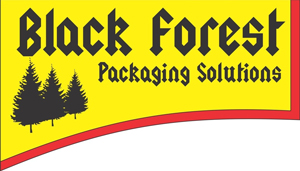Maintenance is an unavoidable responsibility that comes with owning a machine, particularly one that is used on a daily basis. While you may not know when to service your equipment, a routine inspection will provide critical insight into which parts need to be monitored. There are numerous levels of maintenance, but the most basic begins when your machine arrives at your location.
Product packaging equipment, like other machines, is made up of smaller components, each of which plays an important role in its delivery. However, even minor errors, such as a loose screw, can cause significant damage if not addressed promptly. Routine Preventative Maintenance and Ongoing Training can help you extend the life of your packaging equipment.
Routine Preventative Maintenance and Ongoing Training
A system failure does not have to be the impetus for preventative maintenance. This maintenance is performed regardless of how well your machine is performing. It entails inspecting, reporting issues, and acting on them as soon as possible. Monitoring high-wear components, for example, and replacing them on time will help to keep operations running smoothly. Preventative maintenance will reduce unscheduled downtime and help your machine last longer. It increases safety and dependability while decreasing repair costs.
Providing ongoing training to your in-house team will equip them with critical skills for diagnosing and resolving issues with your equipment, saving time and money.
Stocking of High-Wear Components on Time
Machine components such as bearings, nozzles, pumps, and suction cups are subjected to high rates of wear and tear and must be replaced on a regular basis. Having spares on hand will prevent operations from being disrupted if damage occurs. On the contrary, you may end up with extended downtimes while looking for the right spare parts and waiting for them to arrive. After only a few weeks of working with a new machine, your maintenance manager will have a good idea of which components require frequent replacement and will be able to budget and restock in a timely manner if given the mandate.
Upgrade Planning and Budgeting
Even if you follow your maintenance schedule religiously, your machine will require upgrades even if it is in good condition. Some machine components become obsolete over time and are replaced by more efficient upgrades. Upgrades make machines better and faster, increasing efficiency through lower energy consumption and waste reduction. You may also need to add new components to improve the machine’s efficiency. Such upgrades can be slightly more expensive than regular maintenance, necessitating early planning and budgeting.
Redistributing Autonomous Maintenance Tasks
Day-to-day basic maintenance includes tightening protective covers, cleaning components, lubricating gears and other moving parts, and tightening screws and bolts. Although it can be done by junior technicians, it is more cost effective and time efficient to delegate such tasks to your machine operators. They must, however, be adequately trained, as this entails additional responsibilities.
Your operators can also help your maintenance team by inspecting the machine for higher-level issues such as loose conveyor belts, noisy components, insensitive sensing devices, and misaligned gears and guide rails.
Purchasing from a Trustworthy Machine Manufacturer
The durability of your equipment is also determined by the manufacturer’s after-sales support. If your manufacturer has invested heavily in testing the machine, you will have an easier time accessing spare parts and critical information about the machine during downtimes. A nearby manufacturer will save you money on shipping and will provide technicians who fully understand your machine. Aside from providing flexible packaging equipment solutions, they will also train your in-house team as an after-sale service, reducing the time required for employees to become acquainted with the machine and saving you money in the form of wastage and damaged products.
Maintenance may cost you a few dollars in the short term, but it will save you money in the long run due to downtime, broken machines, spoiled products, and loss of customer loyalty. While a machine may make noise when it is damaged, it is not capable of alerting you to most problems in a timely manner. As a result, it is your responsibility to inspect and repair as needed. Purchasing flexible packaging equipment solutions from a trustworthy dealer will save you money in the form of free training and faster problem solving, which will add up to larger savings in the long run.


Recent Comments